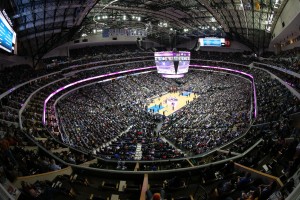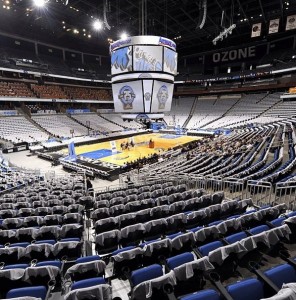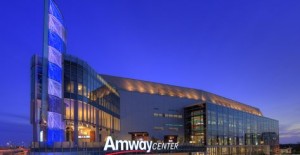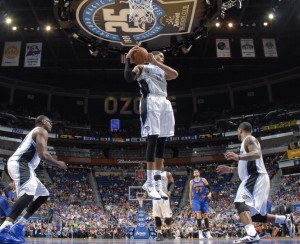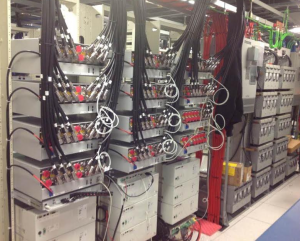Last week his team’s home facility, the American Airlines Center in Dallas, formally took the wraps off a powerful new Wi-Fi network. Built by AT&T using 315 access points from wireless gear provider Aruba Networks, the new American Airlines Center network should be at the top of league-arena networks, even if the Mavs’ owner won’t be using it that much. But as he said (in the wake of a SXSW panel last week that was talking about Wi-Fi in stadiums), Cuban isn’t against Wi-Fi anymore. He just thinks you should do more on the floor so that fans aren’t watching their phones.
@Liz_Grow have to have wifi. But you should do everything possible to give people no reason to use it
— Mark Cuban (@mcuban) March 8, 2014
While Cuban’s points about wanting to keep fans engaged with the game instead of looking down at their phones are well-taken, the reality of an always-connected world is that good connectivity is always in demand, especially at sporting events where fans may seek to use breaks to stay in touch with their digital worlds. And while the 21,000-seat American Airlines Center has had DAS installations for improved cellular, a robust Wi-Fi network allows for greater levels of connectivity, as well as potential future applications that might produce a better fan experience as well as more revenue.
“At some point, you just can’t live without it,” said Lori Glasser-Seinera, vice president of corporate sponsorships at American Airlines Center, in a recent phone interview. Cuban, she agreed, was correct in trying to prioritize the fan experience, but even he now agrees that Wi-Fi needs to be part of the stadium amenities. Joe Heinlein, IT Director for the arena, said that for many fans not having connectivity could be a reason to justify staying home.
“We need to make sure we fill our seats, and not fill the couch,” Heinlein said, in the same phone interview. A good network, he said, is one way of ensuring that fans don’t have a reason to stay home.
Moving from back office to fan-facing
Though the fan-facing Wi-Fi network (which AT&T makes available for free to all attendees) is new, there has been an Aruba-based network in the facility for more than several years. According to Heinlein, the network vendor approached the arena in 2005 “with an incredible offer” to put in a Wi-Fi network for back of the house business operations.
“We’ve used it for internal operations, for the press, and in meeting rooms,” said Heinlein of the 40-AP network that went unseen by fans of the Mavs and the NHL’s Dallas Stars, who also share the building. (American Airlines Center is owned by the city of Dallas, which leases it to the Stars and Mavs.) But 2 years ago, Heinlein said the arena started talking about how to put fan-facing Wi-Fi into the facility, a discussion that involved Dallas-based AT&T, a longtime sponsor for the arena.
“Since Aruba had been a longtime partner of ours we requested that AT&T include them in the deployment,” Glasser-Seinera said. The final result is the new Wi-Fi network announced last week, one where AT&T will use advanced Wi-Fi technology to automatically log in AT&T customers. Other carriers’ customers can also use the network, after logging in through a separate process. Heinlein said the network was a joint project between the arena and partners including AT&T, and as such did not divulge the total costs of building the new network.
Aruba gear helps overcome changing network needs
With more than 200 events during a calendar year, American Airlines Center is a constantly changing venue (think circuses, and concerts), especially when it comes to network coverage. Heinlein said specific challenges to connectivity include the large open space in the center of the arena, as well as the need to extend coverage deeper into the floor for basketball games.
“We have a big hole in the center of the arena, and there’s not a lot of places there to hang [antenna] assets,” Heinlein said. A “good portion” of the APs are located beneath seats, Heinlein said, along with some other ones that are located in vertical risers, which had holes bored into them for that purpose.
“It’s always a challenge to get a signal where you need it,” Heinlein said.
For basketball, the seating plan moves farther out onto the floor than for hockey games, a factor that often has the arena’s IT team being creative in deployment strategies, like putting access points on top of mobile tripods to provide extra coverage.
“The people sitting close to the court are very important customers,” Heinlein noted. “One of the reasons we went with Aruba is that their APs lend themselves to being able to make quick changes, and we use that capability.”
Looking to the future, with a network now in place
Cuban’s opinions about replays not working well on cellphones may keep the Mavs from being on the cutting edge when it comes to stadium apps. But that doesn’t mean the arena will be sitting still when it comes to utilizing its new resource. According to Heinlein and Glasser-Seinera, there are many potential new avenues to explore when it comes to using robust in-building connectivity. One such idea is using Wi-Fi as a GPS type system, to help attendees find resources inside the building more quickly. In the past, such applications could only be dreamed about. Now, they can be tested in the real world.
“Now that the system is in, we can test it and try different things,” Heinlein said. “Now that it’s here, we can explore what’s possible.”
